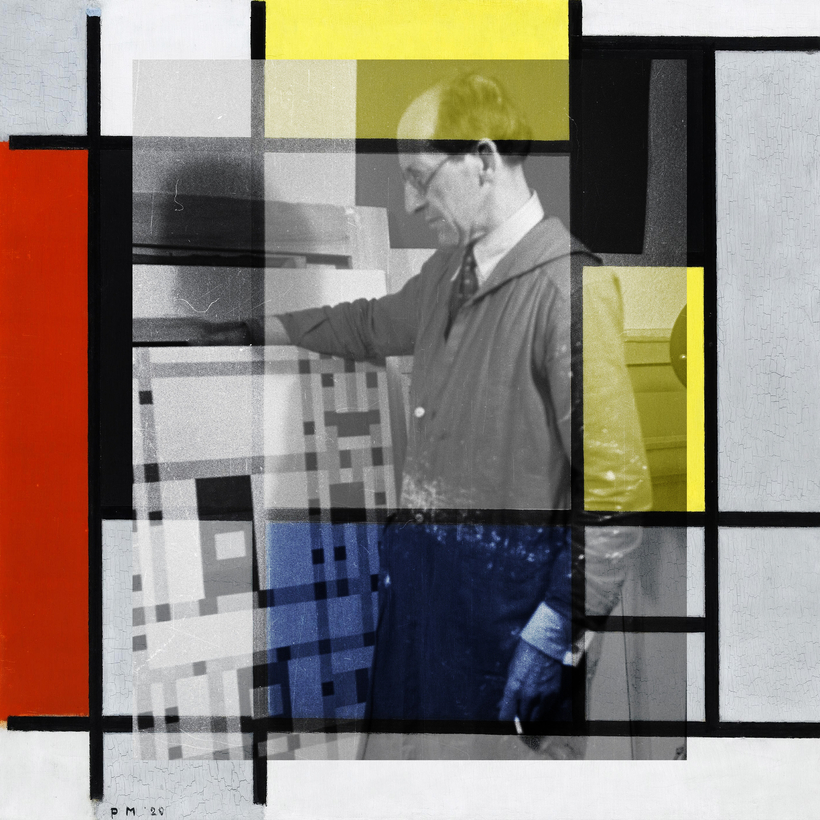We biographers are a merciless lot. We ask anything, however indiscreet, of anyone who knew our subject; we track down any scrap of paper that might bring us closer to the poor soul whose secrets we want to unearth.
It was 2011 when I asked Sir Nicholas Serota, director of London’s Tate museum, who was left among the great artists of the 20th century about whom there was not yet a biography. I had devoted almost a decade each to Balthus and Le Corbusier, doing my utmost to get to the truth behind the rumors and myths. My only requisite of my subjects was that they had to be geniuses and completely original.
Serota had a precise answer: “Léger and Mondrian.”
Mondrian! When I was 10 years old, in 1958, I had attended an exhibition opening at the Wadsworth Atheneum, a great museum in Hartford, because my mother had won an honorary mention there for a watercolor of a dead pheasant. The crowded event was fairly miserable for me, with everyone else so much older and with crustless tea sandwiches I found repugnant. So I asked my father if I could wander in the galleries upstairs.

Fifteen minutes later, I came back down and said, “Daddy, you have to come up with me. There is a painting I love—it’s the way I feel about mountaintops and skiing.” Dad obliged, and while we faced the pure white composition with its few black horizontal and vertical lines and a single rectangle of a vibrant, sky-like blue, he said, “Very good, Nicky. That’s by an artist called Mondrian. Mommy and I have a new book about him you might enjoy.”
It has been love ever since. My fabulous editor of long standing, Victoria Wilson, at Knopf, agreed to the Dutch painter being my subject, and I was quickly like a cat chasing a mouse.
While seeking to uncover what it was that lurked behind Mondrian’s abstractions, I would read a psychoanalyst’s brilliant essay treating them as walls—glorious and uplifting ones—painted to block from view the secrets that lay behind them. What were these secrets?
The most startling piece of information I came upon was that in 1909, Piet Mondrian had failed to attend his own mother’s funeral. Although it was near where he lived in the Netherlands, he was too busy installing an exhibition of his work at the renowned Stedelijk Museum. This revelation of him as a heartless psychopath was repeated in the catalogue raisonné of his work and the wall text of an exhibition at the Centre Pompidou. That coldness seemed to be fundamental to the man who so deliberately left the personal out of his art.

Then, after two years of struggling with him, I came upon a letter in Yale’s Beinecke library from Mondrian’s younger brother Carel written to his heir, the artist Harry Holtzman, in response to the question of when Piet left Holland to move to Paris. Carel said it could not have been before 1910, because he well remembered Piet at their mother’s funeral the previous year. I soon discovered that the slanderous notion that Piet had been absent from that event had no basis.
Over the next decade, I would come upon some extraordinary facts. An early girlfriend of the artist’s reported that Mondrian’s kisses lasted for up to 30 minutes; she timed them while looking out his studio window at a church steeple with a clock on it. I found an unpublished text in which Mondrian’s closest friend described him fleeing to solitude in the countryside only to be followed there by a man from Amsterdam claiming that they were lovers. I learned of his engagement to marry a woman from a solid bourgeois family, of the party to celebrate it, and then of his precipitately breaking it off without explanation.
I discovered his passion for ballroom dancing—the art dealer Sidney Janis had told me years ago that after Mondrian moved to New York they often went to the Roseland dance hall together—and that he was known to practice the foxtrot and then the Charleston alone in the one-room studio where he lived. And then there were his special diets, with proteins and carbohydrates and vegetables only to be eaten at separate times, hours apart from one another. He had a system as meticulous as the way he washed dishes, leaving them to accumulate dirty in the sink for up to three days so that he could wash them all at once without wasting water.

In 1941, when Peggy Guggenheim asked Mondrian to be a juror at an exhibition she was organizing of contemporary art, she saw him looking at a Jackson Pollock. She apologized that he even had to waste his time on such rot. “Not at all, Peggy,” Mondrian replied. He told her that this was the most promising painting he had seen that day, that this unknown painter would go far.
He also took Guggenheim by surprise one afternoon when, uninvited, he planted a kiss on her in the back of a taxicab. It was not long enough to merit timing, but what was clear was that Mondrian could be as astonishing in his persona as he was sublime in his art.
Nicholas Fox Weber is the executive director of the Josef & Anni Albers Foundation and the author of 15 books, including biographies of Balthus and Le Corbusier


